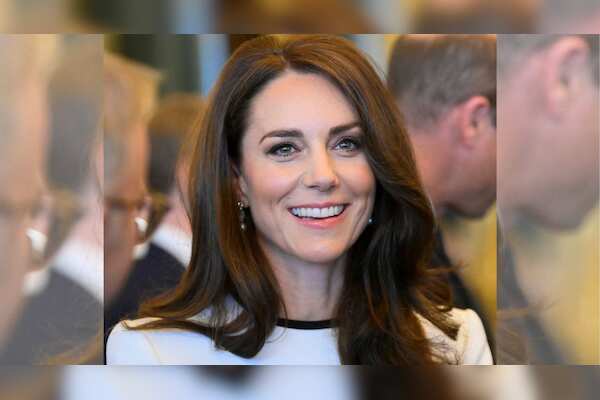Artificial intelligence (AI) has become an indispensable tool in the fashion industry, transforming the way that designers create and consumers shop. While AI has undoubtedly revolutionized the sector with its ability to streamline processes, enhance personalization, and predict trends, it will never be able to replace the unique creativity and artistic vision of human designers. In this article, we will explore the ways in which AI is reshaping the fashion landscape, while also highlighting the irreplaceable value of human creativity in the industry.
One of the most significant ways in which AI is revolutionizing the fashion industry is through the use of data analysis and predictive analytics. By analyzing vast amounts of consumer data, AI algorithms can identify patterns and trends that can help designers make more informed decisions about their collections. For example, AI can analyze social media trends, online shopping behavior, and even weather patterns to predict which colors, styles, and fabrics will be popular in the upcoming season. This data-driven approach has enabled designers to create collections that are more likely to resonate with consumers, ultimately leading to increased sales and customer satisfaction. Another way in which AI is transforming the fashion industry is through the use of virtual fitting rooms and personalized styling recommendations. By using AI-powered algorithms, retailers can provide customers with personalized recommendations based on their style preferences, body shape, and previous purchase history. Virtual fitting rooms allow customers to try on clothes virtually, helping them make more confident purchasing decisions and reducing the likelihood of returns. This level of personalization not only enhances the shopping experience for consumers but also helps brands increase customer loyalty and retention. In addition to data analysis and personalization, AI is also being used to streamline the design process and improve supply chain efficiencies. By utilizing AI-powered design tools, designers can generate unique patterns, textures, and styles in a fraction of the time it would take to create them manually. This not only allows designers to experiment with new ideas and concepts more freely but also helps reduce time-to-market and production costs. AI is also being used to optimize inventory management, production scheduling, and distribution, helping brands reduce waste and improve sustainability. Despite the many benefits that AI brings to the fashion industry, it will never be able to replicate the originality and artistic flair of human designers. The creative process is deeply rooted in human emotion, culture, and experience, and AI simply cannot replicate the intuitive thinking and ingenuity of human designers. Fashion design is a form of self-expression and storytelling, and only human designers have the ability to infuse their creations with meaning, emotion, and personality. Furthermore, AI lacks the ability to comprehend cultural nuances, societal trends, and emotional contexts that shape fashion trends and consumer preferences. While AI can analyze data and identify patterns, it cannot fully understand the subtle nuances and complexities of human behavior and taste. Fashion is not just about following trends or predicting what will sell – it is about evoking emotions, challenging norms, and pushing boundaries. These aspects of creativity are deeply ingrained in the human experience and cannot be replicated by algorithms. Moreover, the fashion industry is driven by innovation, experimentation, and risk-taking – qualities that are uniquely human. Designers are constantly pushing the boundaries of creativity, exploring new materials, techniques, and concepts to create fresh and exciting collections. While AI can certainly assist in the design process by generating ideas and concepts, it lacks the ability to think outside the box, take creative risks, and challenge conventions. Human designers draw inspiration from their personal experiences, cultural influences, and artistic visions, creating designs that are truly one-of-a-kind. In conclusion, while AI has undoubtedly revolutionized the fashion industry with its data analysis, personalization, and efficiency, it will never be able to replace the original creativity and artistic vision of human designers. Fashion design is a deeply human endeavor that is rooted in emotion, culture, and creativity – qualities that cannot be replicated by algorithms. The future of fashion lies in the seamless integration of AI technology with human creativity, allowing designers to leverage the power of data and technology while still retaining their unique artistic expression. As the fashion industry continues to evolve, it is essential to recognize and celebrate the irreplaceable value of human creativity in shaping the trends and styles of tomorrow.Revolutionizing Fashion: AI's Impact and the Irreplaceable Role of Human Creativity
.png) 9 months ago
103474
9 months ago
103474
Related
Princess Kate Takes Leave from Royal Duties Amid Cancer Batt...
1 month ago
18484
Jimmy the baby goat travels across Canada on a 2-week road t...
1 month ago
19638
Iconic "Home Alone" House in Winnetka, Illinois Hits the Mar...
1 month ago
19303
Avneet Kaur Shines at Cannes Film Festival with Stunning Fas...
1 month ago
21630
Trending in United States of America
Popular
Epic Games Prepares to Revolutionize Mobile Gaming with Plan...
4 months ago
135480
Bloomberg: Nintendo Switch successor will be released in ear...
4 months ago
135350
Discover What Your Mobile Cover Reveals About You
4 months ago
135350
Tower Semiconductor wants to build $8 billion chip factory i...
4 months ago
135317
Google Reinstates Indian Apps on Play Store After Government...
4 months ago
135307
Subscribe Newsletter
Fill out the form below to subscribe to our news
© Newstia 2024. All rights are reserved









 English (US)
English (US)